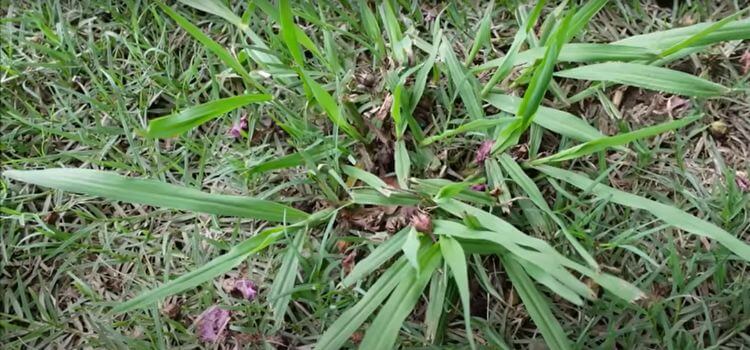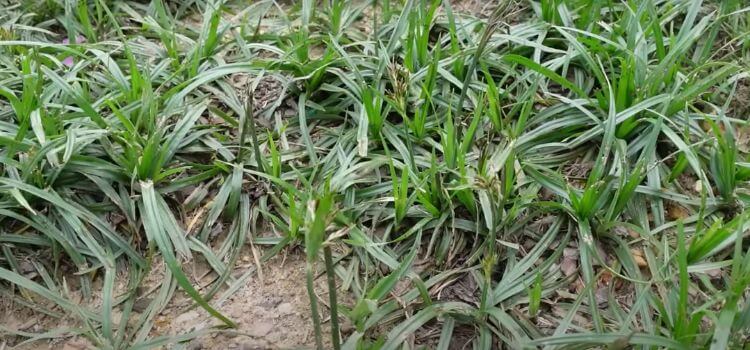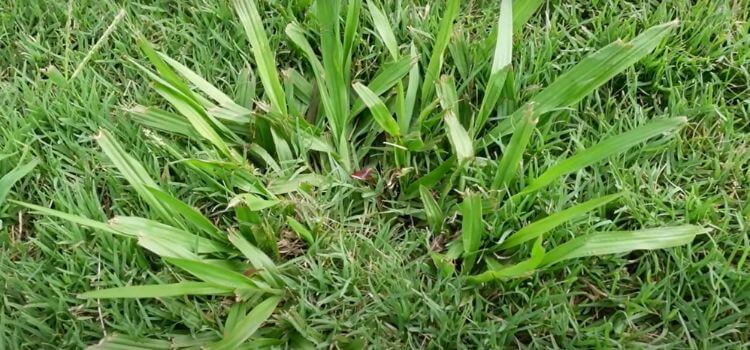As an Amazon Associate, I earn from qualifying purchases.
To eliminate wild grass in your lawn, use a weed killer designed specifically for grassy weeds. To prevent wild grass growth, regularly mow and aerate your lawn.
Many homeowners find dealing with wild grass in their lawns frustrating. These invasive grasses tend to spread quickly and can ruin the overall look of their yard. However, with the right approach and a bit of persistence, you can effectively eliminate wild grass and restore the health and beauty of your lawn.
By following some simple steps and using the proper techniques, you can successfully eliminate wild grass and create a lush, green lawn you can be proud of.

What Are Wild Grass
Maintaining a beautiful lawn is a common goal for many homeowners. One of the biggest challenges is dealing with wild grass. Identifying wild grass early can help in effective removal.
Different Types Of Wild Grass
Many types of wild grass can invade your lawn. Here are some common ones:
- Crabgrass: This grass grows in large clumps and spreads quickly. It usually appears in the summer.
- Quackgrass: This grass has wide blades and spreads through underground stems.
- Dallisgrass: This grass forms coarse clumps with seed heads that resemble spikes.
- Bermudagrass: This grass is tough and spreads through seeds and underground stems.
Knowing these types can help in early identification, which leads to effective control. Different kinds require different removal methods. Use the proper method for each type.
How To Differentiate From Regular Grass
Wild grass often looks different from regular lawn grass. Here are some key differences to look out for:
- Leaf Shape: Wild grass often has wider or narrower leaves than regular grass.
- Growth Pattern: Wild grass usually grows in clumps or spreads quickly.
- Colour: Wild grass can be a shade of green different from your lawn.
- Texture: Wild grass may feel coarser or smoother than regular grass.
Take a close look at your lawn to spot these differences. Regular inspections can help you catch wild grass early. Once identified, use the right tools to remove it. Maintaining a healthy lawn can prevent wild grass from taking over.
Preventing Wild Grass Growth
Keeping your lawn free of wild grass can be a challenge. Wild grass can ruin the look of your lawn, so preventing its growth is essential for a healthy lawn.
Mowing Techniques
Proper mowing techniques can help prevent wild grass growth. Mowing your lawn regularly is critical. Do not let the grass grow too long. Keep your grass at an optimal height of 2 to 3 inches.
Here are some tips:
- Sharpen your mower blades regularly. Dull blades can tear the grass.
- Mow in different patterns each time. This helps grass grow evenly.
- Cut at most one-third of the grass height at a time. This prevents stress on the grass.
Following these tips can help you maintain a healthy lawn. Consistent mowing discourages wild grass from taking root. Make sure to mow your lawn at least once a week.
Fertilization Methods
Proper fertilization ensures your grass stays strong. Healthy grass can outcompete wild grass. Fertilize your lawn at the correct times of the year.
Here is a simple schedule:
| Season | Fertilization |
|---|---|
| Spring | Use a balanced fertilizer to promote growth. |
| Summer | Apply a slow-release fertilizer to maintain strength. |
| Fall | Use a fertilizer with higher potassium to prepare for winter. |
Refrain from over-fertilizing your lawn. Too much fertilizer can harm the grass. Follow the instructions on the fertilizer package. Proper fertilization helps your lawn stay lush and green.
Soil Preparation
Preparing the soil is crucial for a healthy lawn. Healthy soil supports strong grass growth. Test your soil to know its pH levels. Grass grows best in soil with a pH of 6.0 to 7.0.
Follow these steps for soil preparation:
- Add lime if your soil is too acidic. This raises the pH level.
- Add sulfur if your soil is too alkaline. This lowers the pH level.
- Aerate your lawn at least once a year. This helps water and nutrients reach the roots.
Top-dress with compost to improve soil quality. Compost adds organic matter to the soil and helps retain moisture and nutrients. Proper soil preparation gives your grass a strong foundation to grow on.

Removing Wild Grass Manually
Many homeowners face the challenge of unwanted wild grass invading their lawns. Manually removing wild grass is one of the most influential and eco-friendly methods. This technique ensures that your lawn remains healthy and free from harsh chemicals.
Hand-pulling
Hand-pulling is a simple yet effective way to remove wild grass. It requires no special tools, just a bit of patience and effort. Here are some tips to make hand-pulling more efficient:
- Water your lawn before pulling. Wet soil makes it easier to remove roots.
- Wear gloves to protect your hands from dirt and blisters.
- Grasp the grass near the base to ensure you pull out the entire root.
- Please dispose of the pulled grass properly to prevent it from re-seeding.
Regular hand-pulling can keep your lawn free from wild grass. It is best to do this early in the morning or late in the evening when the soil is more excellent, and the grass is more pliable. Consistency is key. Make it a routine to inspect your lawn weekly for any new wild grass growth.
Using A Hoe
Using a hoe can make removing wild grass easier and quicker. A hoe is a versatile tool that can efficiently cut through the soil and uproot wild grass. Here’s how to use a hoe for this purpose:
- Select a hoe with a sharp blade for better results.
- Hold the hoe at a comfortable angle and position it near the base of the wild grass.
- Push the hoe into the soil and lift it to uproot the grass.
- Repeat the process for all visible wild grass patches.
Using a hoe reduces strain on your back and hands. It allows you to cover larger areas more quickly. Remember to clear the uprooted grass from your lawn to prevent regrowth. Regular hoeing can help maintain a wild, grass-free lawn.
Digging Up The Roots
Digging up the roots is another effective method to remove wild grass. This ensures that the grass does not grow back. Here are some steps to dig up the roots:
- Use a garden fork or a spade for this task.
- Insert the tool deep into the soil around the wild grass clump.
- Gently lift the soil to expose the roots.
- Pull out the entire clump along with the roots.
- Fill the hole with fresh soil or compost to prevent new weeds.
Digging up the roots is labour-intensive but very effective. It is ideal for larger clumps of wild grass. Regularly inspecting and removing wild grass can keep your lawn healthy and beautiful. This method ensures the complete removal of wild grass and helps maintain a lush, green lawn.
Using Herbicides
Keeping your lawn free of wild grass can be a tough job. These unwanted plants can quickly take over, ruining the appearance of your garden. One effective method to manage wild grass is by using herbicides. This guide will help you understand the types, application times, and safety measures for herbicide use.
Types Of Herbicides
There are different herbicides to choose from. Each one works in its unique way. Here’s a quick look at the main types:
- Selective Herbicides: These target specific types of plants without harming others. They are perfect for lawns with both grass and flowers.
- Non-Selective Herbicides: These kill all plants they touch. Use them when you need to clear a large area.
- Pre-Emergent Herbicides: These stop seeds from sprouting. Apply them before the wild grass starts to grow.
- Post-Emergent Herbicides: These kill wild grass that is already growing. They are best for tackling existing problems.
Selective herbicides are often the safest choice for lawns. Non-selective types are useful for clearing driveways and paths. Pre-emergent herbicides are great for prevention, and post-emergent herbicides help treat existing wild grass. Always read the labels for proper usage.
When To Apply
Timing is critical for herbicide application. Different herbicides work best at other times:
| Herbicide Type | Best Time to Apply |
|---|---|
| Pre-Emergent | Early Spring or Fall |
| Post-Emergent | Late Spring or Summer |
Pre-emergent herbicides should be applied in early spring or fall before the wild grass seeds sprout. Post-emergent herbicides are best used in late spring or summer when the wild grass is already growing. Applying at the right time ensures the herbicide works effectively.
Safety Precautions
Using herbicides safely is very important. Here are some essential safety tips:
- Read Labels: Always read the herbicide label before use. It contains essential information on dosage and application.
- Wear Protective Gear: Wear gloves, goggles, and long sleeves to protect your skin and eyes from chemical exposure.
- Keep Pets and Children Away: Keep pets and children away from treated areas. They should not touch or play on the lawn until it is safe.
- Proper Storage: Store herbicides in a cool, dry place, out of the reach of children and pets.
- Dispose Properly: Follow local guidelines for disposing of herbicide containers. Do not pour leftover herbicide down the drain.
Using herbicides can be safe and effective if you follow these tips. Always prioritize safety for you, your family, and your pets. Proper storage and disposal are crucial to avoid accidents and environmental harm.
Replacing Wild Grass With Desired Grass
Maintaining a lush, green lawn can be challenging, especially when wild grass takes over. Replacing wild grass with the desired grass type is essential for a beautiful yard. This guide will help you choose the suitable grass, decide between seeding or sodding, and maintain your lawn properly.
Choosing The Right Grass Type
Choosing the right grass type for your lawn is crucial. Different grass types thrive in different climates and soil conditions. Here are some popular grass types and their characteristics:
- Bermuda Grass: Grows well in warm, drought-tolerant climates and forms a dense turf.
- Kentucky Bluegrass: Ideal for cool climates, it forms a thick, lush lawn but requires regular watering.
- Zoysia Grass: Adaptable to various climates, slow-growing, and creates a dense, carpet-like lawn.
Consider the following factors when selecting your grass type:
| Factor | Importance |
|---|---|
| Climate | Choose grass suited for your region’s temperature and rainfall. |
| Soil Type | Ensure the grass can grow well in your soil conditions. |
| Maintenance | Consider how much time you can dedicate to lawn care. |
Seeding Or Sodding
When replacing wild grass, you need to decide between seeding or sodding. Each method has its pros and cons. Seeding involves planting grass seeds directly into the soil. This method is cost-effective and allows for a wider variety of grass types. Here are some benefits of seeding:
- Cost-effective: Seeds are cheaper than sod.
- Variety: More grass types are available as seeds.
- Customization: Mix different seed types for a unique lawn.
Sodding involves laying down pre-grown grass. This method provides instant results and is less prone to erosion. Here are some benefits of sodding:
- Instant Lawn: Immediate green cover.
- Erosion Control: Reduces soil erosion.
- Weed Control: Less likely to have weeds compared to seeding.
Choose the method that best suits your needs, budget, and timeline.
Proper Maintenance
Proper maintenance is vital to keeping your lawn healthy and wild grass-free. Regular mowing, watering, and fertilizing are essential. Mow your lawn to the recommended height for your grass type. This helps prevent weeds and keeps the grass healthy. Here are some tips for proper lawn maintenance:
- Mowing: Keep grass at the right height to deter wild grass.
- Watering: Water deeply and infrequently to encourage strong roots.
- Fertilizing: Use the right fertilizer for your grass type and soil conditions.
Check your lawn regularly for pests and diseases. Treat any issues promptly to prevent damage. Aerate your lawn annually to improve soil health and promote root growth. Following these steps, you can maintain a beautiful, healthy lawn free of wild grass.
Maintaining A Wild Grass-free Lawn
Maintaining a beautiful lawn can be challenging. One common problem is wild grass. These unwanted plants can spread quickly and ruin the look of your lawn. Learning how to get rid of wild grass is crucial. This guide will help you maintain a wild, grass-free lawn.
Regular Inspection
Regular inspection of your lawn is vital. This helps spot wild grass early. Early detection makes removal easier. Here are some steps to follow:
- Walk around your lawn daily. Look for any unusual plants.
- Check the edges of your lawn. Wild grass often starts there.
- Inspect after rain. Wet soil makes it easier to see new growth.
If you find wild grass, remove it immediately. Pulling it out by hand is adequate. Make sure to remove the roots. Otherwise, it will grow back. Use gloves to protect your hands. For larger areas, tools. A small trowel or a spade works well. Be thorough and check the entire lawn.
Effective Lawn Care Practices
Effective lawn care practices prevent wild grass. Healthy lawns resist unwanted plants. Here are some tips:
- Water your lawn correctly. Deep watering encourages strong roots.
- Mow your lawn regularly. Keep the grass height consistent.
- Fertilize your lawn. Use a balanced fertilizer for healthy growth.
Aeration is also essential. It helps the soil breathe, promoting healthy grass growth. You can rent an aerator or hire a professional. Another key practice is overseeding, which means adding more grass seeds. It fills in bare spots and crowds out wild grass.
Using mulch around your garden can also help. Mulch prevents wild grass seeds from taking root. Apply it around trees, shrubs, and flower beds. This keeps your entire yard looking neat.

Frequently Asked Questions
Remove wild grass by hand-pulling or using a hoe. Apply pre-emergent herbicides to prevent new growth. Maintain a healthy lawn with regular mowing and watering.
To kill wild grassroots, apply a herbicide directly to the roots, ensuring complete coverage. Regularly mow or pull out any regrowth to prevent further spread.
To eliminate wide-blade grass in your lawn, use a selective herbicide targeting broadleaf weeds. Follow the instructions on the product label for best results. Regular mowing and proper lawn care can also help prevent the spread of wide-blade grass.
Remove existing grass using a sod cutter. Test soil pH and amend if necessary. Choose the new grass type. Reseed or lay sod, then water regularly. Maintain proper care for healthy growth.
Conclusion
Achieving a weed-free lawn requires diligence and the proper methods. Consistent maintenance and natural solutions are essential. With these tips, your lawn can thrive. Say goodbye to wild grass and hello to a lush, green yard. Follow these steps and enjoy a beautiful, weed-free lawn.

